Overview: The 362/12
This is probably not what springs to mind when you hear the words “Rickenbacker doubleneck,” but it is the one that came first:
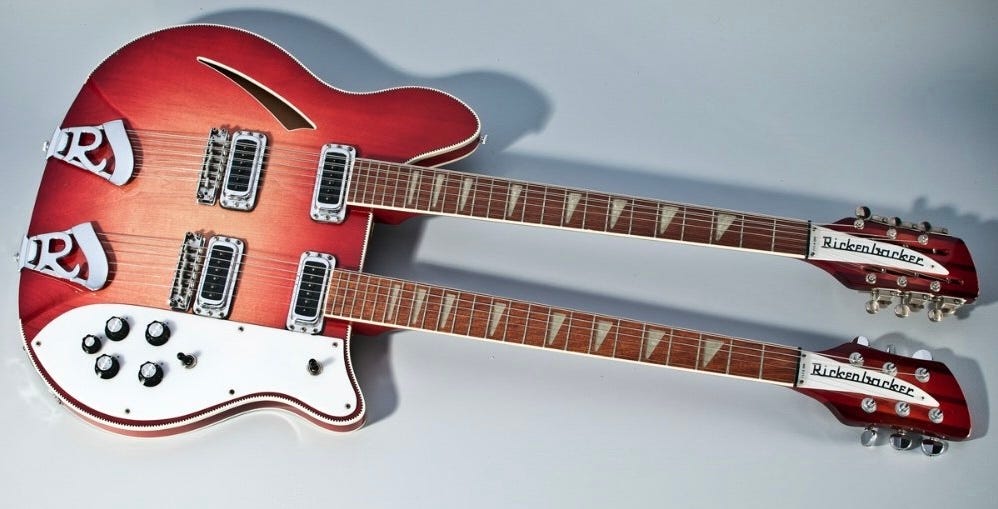
OK, technically there was a 1961 custom order for Kenny Blackwell (which you can read about here) and a 1963 prototype, but as far as “production models” go the 362 beat the more famous 4080 to the market by a couple months, first appearing in June of 1974.
And when you think about it, the 362/12 kinda makes more sense as a starting point for Rickenbacker than the 4080—there was demonstrated (if small) market for a 6/12 doubleneck (Stairway to Heaven, anyone?), Rickenbacker “owned” the 12-string space…it seems like a natural fit, no? I mean, it’s not like they were selling many guitars in 1974…so why not the 362/12?
So let’s go into the details, because apart from the whole “two necks” thing it’s a pretty unique beast—starting with the body shape! When trying to describe/put the general body shape into “Rickenbacker context”, the closest analogue I can come up with is the 4005WB.
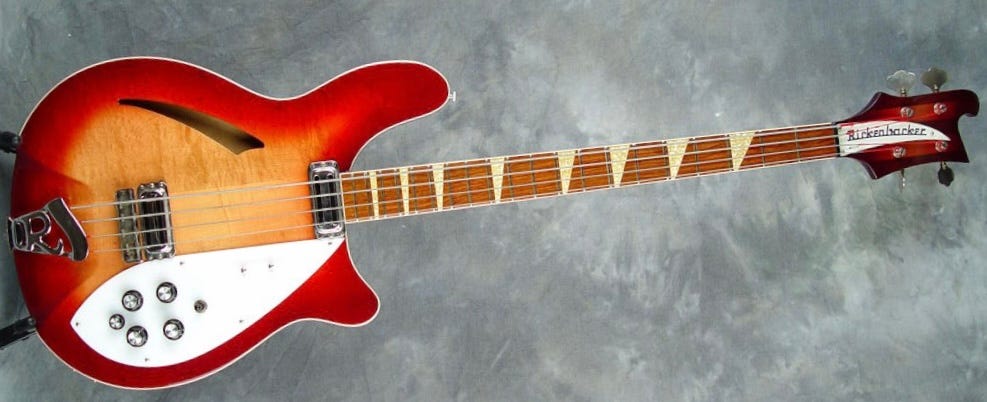
Here’s what I mean by that. The 4005 was inspired by the then-new “rounded top” 360. The 4005WB took that rounded top guitar and kept the same shape, but gave it a flat top and added top binding. Same story with the 362/12. The round top 360 was the inspiration, but they gave it a flat top and binding—again, a combination that had never appeared before.
Just as an aside, at least one such flat top 360/12 was built in 1983. You can read about it here. Looks kinda weird, doesn’t it?
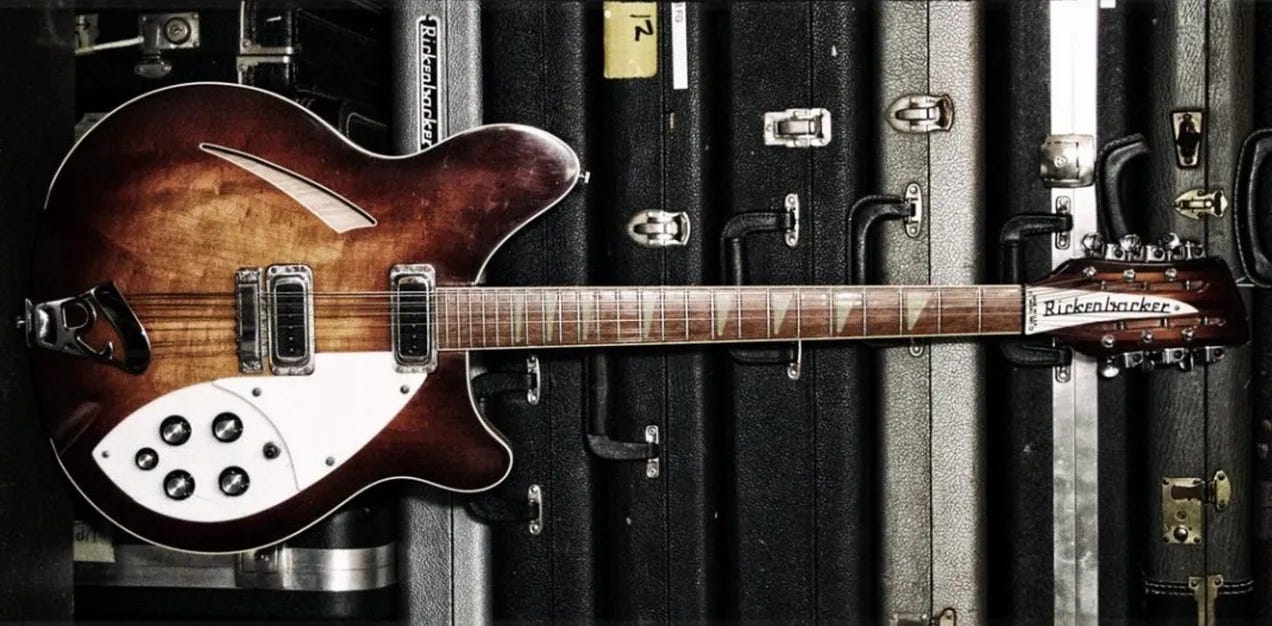
But the 362/12 did it first. And if you look at the 1963 doubleneck prototype, which had a more “traditional” 360OS-ish shape, you can see why—the 1974 design just looks better.

As near as I can tell they were built the same way as any other semi-hollow body, only the top was made of three pieces instead of two—the center piece running roughly between the two “outer” edges of the two necks.
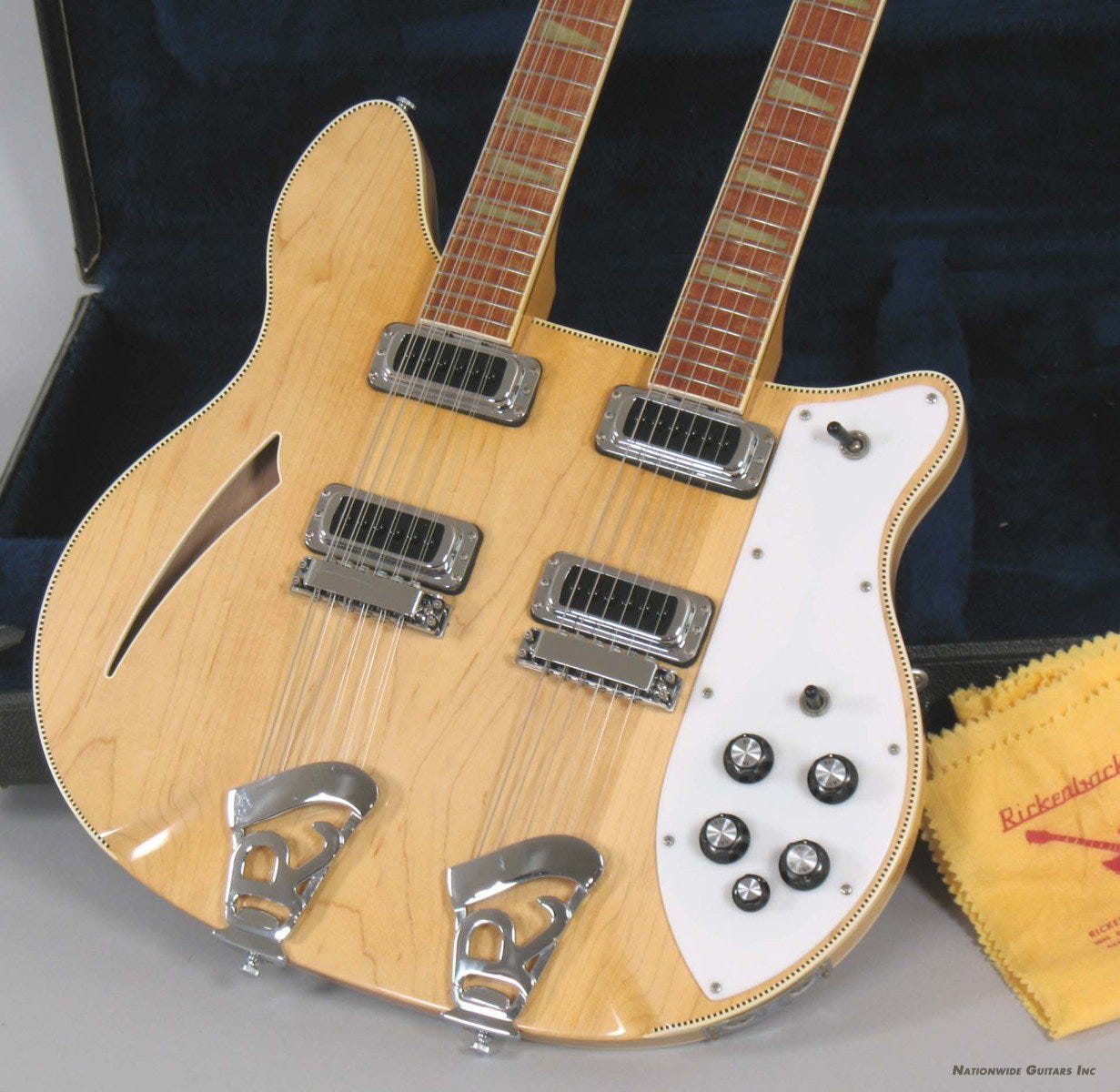
The back, however, was only two pieces, center-seamed. Both sides got two-ply checkered binding—an unusual and “special” feature in that era.
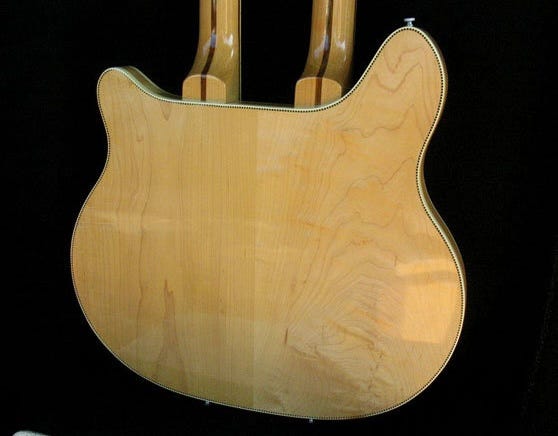
Pretty much everything else on the guitar—including the 360 and 360/12 necks—was straight out of the standard parts bin. Well, apart from the single-level pickguard which covered most of the lower side and contained an extra toggle switch on the upper horn.

As you might expect, the extra toggle allowed you to choose between the six and twelve string necks. The remaining 5 knob/1 switch control panel with stereo output worked exactly as normal for each neck, based on which one was selected. If you wonder how they accomodated the extra toggle, wonder no more!
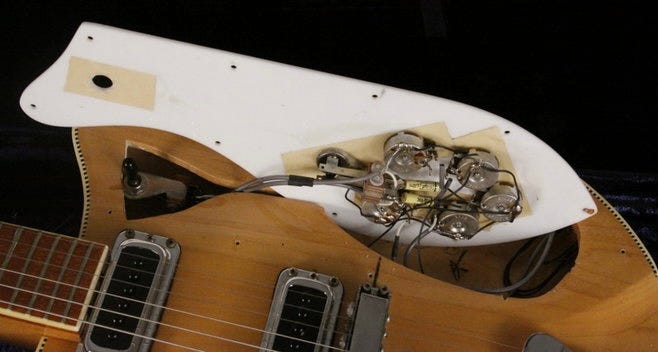
Because the 362/12 used “normal” 360 and 360/12 necks, this means the model began life with a “Gumby” headstock on the 6-string neck.

This meant that when the “Gumby” headstock shape changed to the “paddle” shape on the 360 in 1985, so it did on the 362/12.

The same is true of all other 360 evolutions over the 362/12’s lifespan: as the 360 got new pickups/bridges/tuners/ etc, so too did the 362/12.
Is it heavy, you ask? It is in fact heavy. I mean, look how frickin’ big it is! They weighed in at about 12 1/2 pounds or so—more than your average Gibson EDS-1275. So not something you’re gonna want to play as your “main” guitar.
I can’t swear to this, but it looks to me like over time the neck angles changed a bit—but just a bit—to get them a bit further apart. They were never parallel, but look at the two examples below and see if you agree or not.
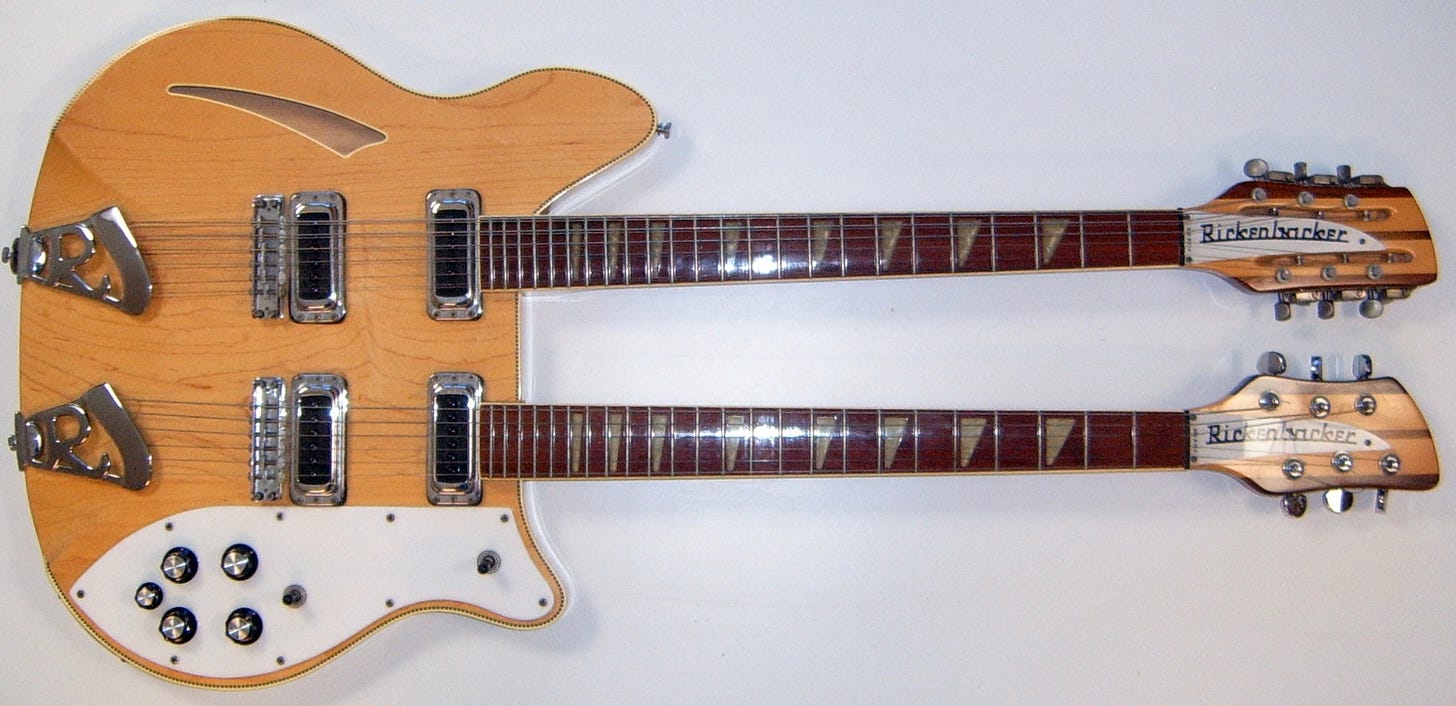

When you google “who played a Rickenbacker 362/12”…you don’t find much. Tom Petty had one (of course), and it appears on the back cover of “Hard Promises” and he played it live on the TV show “Fridays” (a short lived SNL competitor) in 1980.
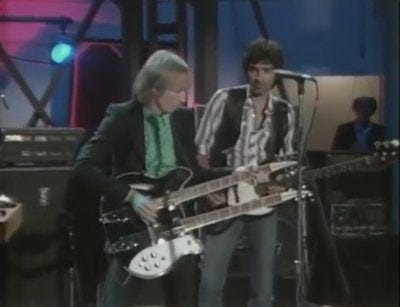
…but that’s about it. They were heavy, they were expensive (new the 362/12 cost more than a 360 and a 360/12 combined!), and the market was never gonna be huge. Are they rare as a result? You betcha. Probably less than 100 made over its lifetime.
Speaking of, production began in June, 1974. The model first appeared on the 1975 price list, and it remained on the price list until 1986, when the last documented examples were made. So well less than ten a year over a thirteen year run.
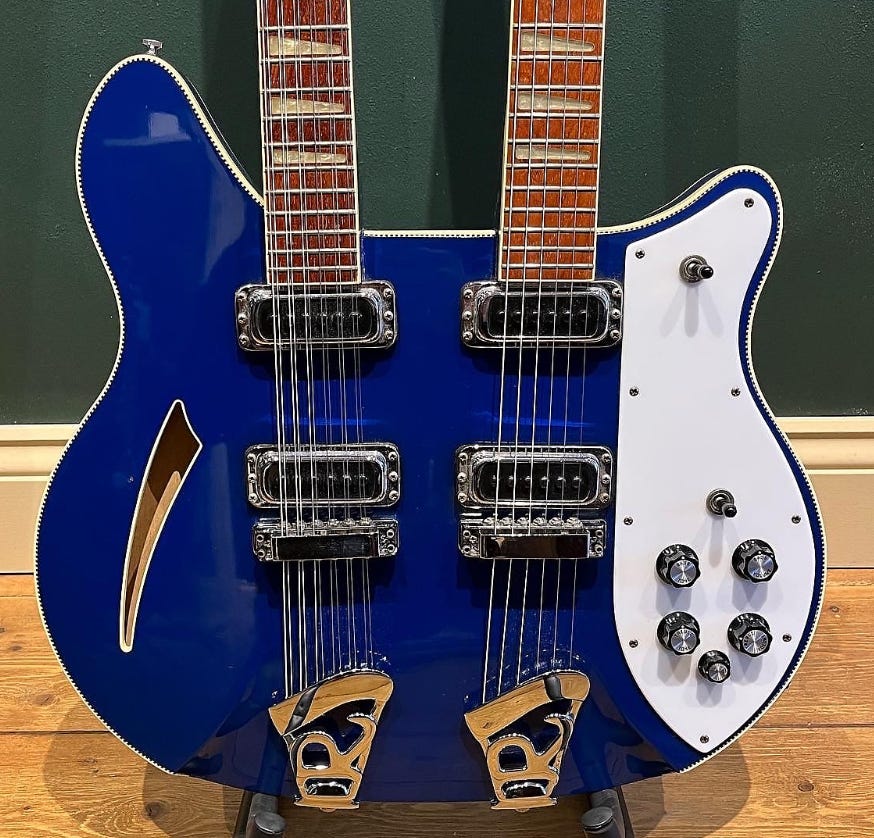
I gotta tell you though, I think they look cool as hell—especially in Azureglo like the one above. Do I want one? No, of course not. They’re impractical, weigh a ton, and cost a fortune. But if I HAD to have a Rickenbacker doubleneck, I’d take the 362/12 over the 4080 every day. They just look cool as hell…
There’s lots more to learn at rickenbacker101.com. We even have a handy site map to show you what we’ve already covered. Don’t see what you’re looking for? Drop it in the comments and we’ll add it to the queue!


I remember working on 362/12 guitars in Summer of 1974 at the Rickenbacker factory in Santa Ana, California. The instruments I worked on were Mapleglo with highly figured/birdseye maple. I did final fine sanding before buffing. I wrote my initials, “KT” in the pots cavity. ~ Kim Turtenwald
I get the "cool factor" of a 12/6 but... ANYTHING over a 4080? Man, you cray! The 4080 is the definitive doubleneck - esp from Rickenbacker - with the Gibson 1275 (or whatever the number is) next, and THEN this one, I suppose, if you're a collector - and if you're a specifically Rickenbacker collector, the 4080 would *still* come first for me. But dang this was interesting.